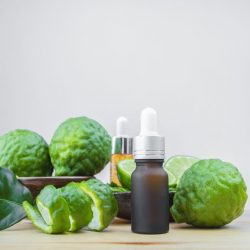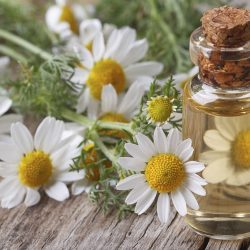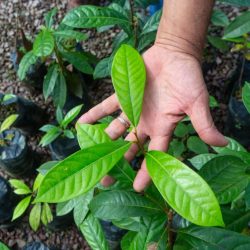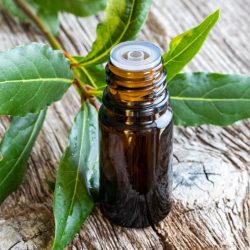Balsam Fir essential oil is a natural treasure, often overlooked. This precious elixir, extracted from the “king of the icy forests“, is a pillar of natural medicine thanks to its many virtues. In this article, we explore in detail the history, properties and uses of this remarkable essential oil.
Balsam fir, whose botanical name is Abies balsamea, belongs to the Pinaceae family. Its essential oil comes from its resin or needles.
History of Fir
This large conifer is the only tree in its family to take root in Quebec soil, and is known as the “balsam fir”. The balsam fir is present and reliable in all seasons. Its sticky resin is encrusted in small blisters that decorate its smooth, grey bark. This precious resin is precisely one of the virtues of the balsam fir: a fragrance of happiness! In fact, it smells so good that it alone can replace the aroma of a lovingly prepared fruit salad.
Its origins
The Amerindians used fir gum as a remedy for flu, scurvy and wounds, and to seal their bark canoes.
Balsam fir is a conifer with a noble habit, the only tree in its family to take root in Quebec soil. The balsam fir is generous with its presence and reliable in all seasons. Its sticky resin is stored in small vesicles that decorate its smooth, greyish bark. And this resin is precisely one of the virtues of the balsam fir: its delightful aroma! In fact, its smell is so exquisite that it alone replaces the aroma of an entire fruit salad prepared with love.
This evergreen mixes easily with other tree species, as it has done, choosing the same host site after a long ice age. We’re talking about a story that goes back 12,000 years. The balsam fir is so much a part of the region’s forest personality that it is rightly called the “king of the forest”. And that’s no empty phrase. It’s also far from coming solely from the image of a snowy holiday with the balsam fir enthroned in our living room, all lit up. In fact, this noble title is a living tribute to the tree which, over time, has lived on in all its forms for all the peoples who have lived with it. It’s a tree that takes root on the path of light.
Turpentine is a substance distilled from the gum of various conifers, including balsam fir and pine. It had the advantage of being easier to use than gum, which has the unpleasant characteristic of being very sticky. The gum and turpentine extracted from it were known interchangeably as “Canadian balsam” or Terebenthina canadensis (Canadian turpentine). They were also said to have the same properties.
Mythology and Christianity
The fir tree has enjoyed this status not only in northern regions but also in more continental areas where the high altitude is suited to its needs, which are as follows: coolness, acid soil, plenty of water, little sun, shade and frost (this is particularly true of the Siberian fir, Abies sibirica). This was already indicated in part by Theophrastus in the 4th century BC, who is undoubtedly the most precise of the ancient botanists in his observations: “The pine, which is particularly beautiful and large in well-exposed places, does not grow at all in the shade; on the other hand, the fir, which is very beautiful in the shade, is much less so in full sun”.
As a coniferous tree, the fir bears its needles all year round. It is one of those species known as semper virens, of which there are many representatives (laurel, ivy, yew…). It’s hard not to notice the fir’s green finery in the middle of winter. This is undoubtedly why it was associated with a number of rites marking the return of the sun, close to the winter solstice. This is the case with the cult of Mithras, symbolising the victory of light over the necessary darkness.
It’s all about regeneration, both physical and spiritual. Is it any wonder, then, that the fir tree has been associated with nuptial rites? In this respect, the fir tree plays a very active role. In the depths of winter, it has the advantage of always being full of green. So other trees were beaten with fir branches to wish them good fruit. The same was done with women, to achieve the same goal: a beautiful child.
There are many other customs that recall the reproductive value of the fir tree. In Germany, for example, newly-weds carried fir branches and candles in their hands.
The fir tree accompanied by the fire of candles is bound to evoke something in you. Christians made do with the old rituals. For example, Sol invictus gradually became the feast of the Nativity, linked to that of Christ, the bringer of light and hope, around the time of the ascending solstice gate. It didn’t matter that Christ was born in a land where fir trees didn’t grow. The idea was to co-opt the local sacred tree and turn it into a Christ-like avatar. And of course this depends on the region.
Colonial times
The Amerindians quickly introduced the French colonists to the many uses they had for fir gum: as a remedy for influenza, scurvy, cuts and burns, and as a sealant for various containers and bark canoes. Under the French Regime, the harvesting of fir gum quickly became an activity from which coureurs des bois and trappers were able to earn a seasonal income. According to Brother Marie-Victorin, author of the reference work La Flore laurentienne, fir gum was one of the essential items in French-Canadian folk medicine. At the time of Intendant Jean Talon, resin was also used to make shoes and build boats.
A little later, it was also used to varnish violins. Because its light refraction index is identical to that of glass, fir gum was much sought after around the world for gluing high-precision optical lenses or for making microscope slides. This substance is universally known as “Canada balsam”. It is still used today in dentistry for root canal treatment. It is found in some toothpastes, varnishes and paints.
In Quebec, fir gum is still harvested by hand and sold on a seasonal basis. The resin is extracted and sold locally as a natural remedy and on international markets for various industrial uses.
Turpentine, a substance distilled from the gum of various conifers, including balsam fir and pine, is best known for its medicinal uses. It had the advantage of being easier to use than gum, which has the unpleasant characteristic of being very sticky. The gum and turpentine extracted from it were known interchangeably as “Canadian balsam” or Terebenthina canadensis (Canadian turpentine). They were also said to have the same properties.
Contemporary period
At the end of the 19th century, turpentine was still used in Quebec hospitals, as can be seen in the 1890 edition of Traité élémentaire de matière médicale by the Sisters of Providence. Exciting and, in high doses, purgative, turpentine acted especially on the urinary tract and the mucous membranes of the respiratory tract. It was very popular, used as a plaster or ointment on cuts, old ulcers, rheumatism, kidney pain, etc.
In Europe, each cardinal point is accompanied by an emblematic tree: the birch in the east, the pine in the south, the oak in the west and the fir in the north. These are all anthropogenic trees that have been of considerable importance to the various peoples living in these regions.
In some regions, where fir trees do not grow, a pine branch was decorated on Christmas Eve. Initially a Nordic tradition (Sweden, Norway, Russia, Poland and northern Germany, i.e. where it originally grew), the “Christmas tree” gradually spread to more southerly areas. In France, this custom appeared late, if we are to believe the sources. The first Christmas tree is thought to have appeared in Strasbourg cathedral in the 16th century, while others date the custom back to the reign of Louis-Philippe, three centuries later.
Nowadays
Today, many of the Christmas trees sold in France are nothing more than spruces, to be found on pavements as early as January, after a few hours of glory..
The Christmas tree has also become something of a funeral symbol. Mentioned here and there as adjoining cemeteries (where yew and cypress trees are planted elsewhere), the wood of this tree was used to make coffins, hence the famous saying: “It smells like fir! What seems anecdotal should not conceal the fact that the fir tree has a very strange relationship with its congeners felled near it.
Indeed, when a fir tree is cut down, its stump does not die, but is covered “with a thin layer of living tissue, without producing any rejection, in other words it heals spontaneously”. The stump then allows the surrounding fir trees to benefit from its own root system, through a process of root fusion. Through this exchange, we can say that the fir tree uses the stump to increase its own energy. Could we say that it is paying tribute to its fallen brother?
While the fir tree is very sensitive to sunlight, it also seems to be dependent on the moon. A tree that doesn’t like the sun must necessarily have a lunar connection. This is what Francis Hallé tells us in his excellent Plaidoyer pour l’arbre. This great tree specialist explains that there are significant differences in the quality of fir wood depending on when it is felled. When felled during the waxing moon, the wood is 1.7% heavier. On the other hand, when the moon is waning, the wood is 7.5% denser and 12.6% more resistant to pressure.
While the first figure is of little consequence, there is every reason to cut a fir tree during a waning moon if you want to use it for firewood or carpentry. All this seems to be attributed to the way the water behaves inside the trunk, in the same way as the tides are subject to the movements of the moon. If the moon, depending on its position, is a determining factor, there are others that we have already mentioned: shade, humidity, acidity of the soil, little sunlight, altitude and, perhaps, latitude.
What are the pharmacological properties of balsam fir needle resin essential oil?
Let’s take a closer look at the pharmacological properties of balsam fir needle resin essential oil.
Analgesic properties :
Balsam fir essential oil is a local rheumatic analgesic.
Antibacterial properties :
Antibacterial against methicillin-resistant Staphylococcus aureus, this oil is also active against Actinomadura madurae, which can cause actinomycetoma. It has also been shown to potentiate the effect of the antibiotics ceftazidime, amoxicillin, cefepime, cefoxitin and amikacin on Escherichia coli.
Fir is also antiviral and antifungal, inhibiting the formation of biofilm in Candida albicans.
Anti-inflammatory properties:
Anti-inflammatory, with an adrenergic stimulating action as well as chondroprotective, balsam fir is also cortison-like; it therefore stimulates the pituitary-cortical-adrenal axis and is of interest in prolonged inflammatory conditions.
Anti-cancer properties :
Containingalpha-pinene, balsam fir essential oil is active on NK cells, increasing their cytotoxicity.
Expectorant and mucolytic properties:
Mucolytic and expectorant, it is also antitussive, balsamic, respiratory oxygenator and secretolytic. In particular, it increases the kinetics of mucociliary transport in the sinuses.
Other properties:
- Balsamic
- Antiasthenic (adrenal)
- Rubbing
- General tonic and stimulant
- Antioxidant
- Lymphotonic and decongestant
Are there any precautions to be taken when using Balsam Fir essential oil?
- Dermocaustic in its pure state, dilution required
- Contraindicated in pregnant or breast-feeding women
- Avoid in combination with cortisone, risk of drug interaction
- Do not use over a prolonged period, as there is a risk of resting the pituitary-adrenal axis and suffering acute adrenal insufficiency if you stop taking the essential oil
- Avoid applying the essential oil in the evening (or before any period of rest)
- Not recommended for people suffering from osteoporosis, due to the inherent risk of decalcification
- Epileptic in high doses
- Not recommended for children under 7 years of age
- Caution in cases of renal insufficiency per os (nephrotoxic)
- Enzyme inhibitor, risk of drug interaction, ask your pharmacist for advice
- Contraindicated in asthmatics
Medical literature and clinical trials:
- Legault J, Dahl W, Debiton E, Pichette A, Madelmont JC. Antitumor activity of balsam fir oil: production of reactive oxygen species car induced by alpha-humulene as possible mechanism of action. Planta Med. 2003
- Astani A, Schnitzler P. Antiviral activity of monoterpenes beta-pinene and limonene against herpes simplex virus in vitro. Iranian Journal of Microbiology. 2014
- S Uribe, J Ramirez and A Peña. Effects car of beta-pinene on yeast membrane functions. J Bacteriol. 1985
- Paul, D. B., & Dobberstein, R. H. (2000). Expectorants, Antitussives, and Related Agents. Kirk-Othmer Encyclopedia of Chemical Technology
- Behrbohm H, Kaschke O, Sydow K. [Effect of the phytogenic secretolytic drug Gelomyrtol forte on mucociliary clearance of the maxillary car sinus]. Laryngorhinootology. 1995
- Hmamouchi M, Hamamouchi J, Zouhdi M, Bessiere JM. Chemical and Antimicrobial Properties of Essential Oils of Five Moroccan Pinaceae. Journal of Essential Oil Research
- Park BB, An JY, Park SU. Recent studies on pinene and its biological and pharmacological activities. EXCLI CAR J. 2021
- Rivas da Silva AC, Lopes PM, Barros de Azevedo MM, Costa DC, Alviano CS, Alviano DS. Biological activities of α-pinene and β-pinene enantiomers. Molecules. 2012
- Amaral FLE, Farias TC, de Brito RC, Car de Melo TR, Ferreira PB, Lima ZN, da Silva FFM, Ferreira SB. Effect of the Association and Evaluation of the Induction to Adaptation of the ( )-α-pinene with Commercial Antimicrobials against Strains of Escherichia coli. Curr Top Med Chem. 2020
- Astani A, Reichling J, Schnitzler P. Comparative study on the antiviral activity of selected monoterpenes derived from essential oils. Phytother Res. 2010
- Xia Z, Mao X, Luo Y. [Study on antifungal mechanism of alpha-pinene] Hunan yi ke da xue xue bao = Hunan Yike Daxue Xuebao = Bulletin of Hunan Medical University. 1999
- Rivas da Silva AC, Lopes PM, Barros de Azevedo MM, Costa DC, Alviano CS, Alviano DS. Biological activities of α-pinene car and β-pinene enantiomers. Molecules. 2012
- Martin S, Padilla E, Ocete MA, Galvez J, Jimenez J, Zarzuelo A. Anti-inflammatory activity of the essential oil of Bupleurum fruticescens. Planta Med. 1993
- Rufino AT, Ribeiro M, Judas F, Salgueiro L, Lopes MC, Cavaleiro C, Mendes AF. Anti-inflammatory and chondroprotective activity of ( )-α-pinene: structural and enantiomeric selectivity. J Nat Prod Car. 2014
- Jo H, Cha B, Kim H, Brito S, Kwak BM, Kim ST, Bin BH, Lee MG. α-Pinene Enhances the Anticancer Activity of Natural Killer Cells via ERK/AKT Pathway. Int J Mol Sci. 2021
- Him, A., Ozbek, H., Turel, I., & Oner, A. C. (2008). Antinociceptive car activity of alpha-pinene and fenchone. Pharmacologyonline







